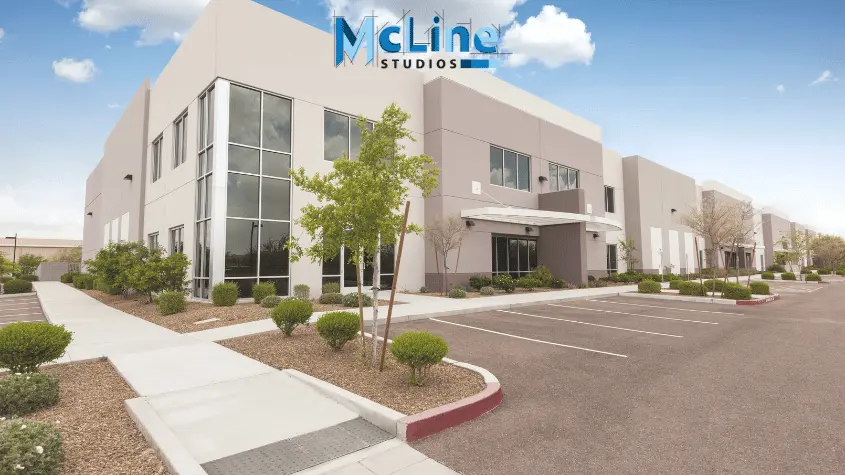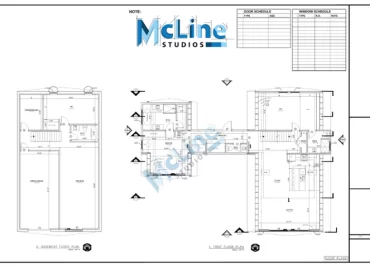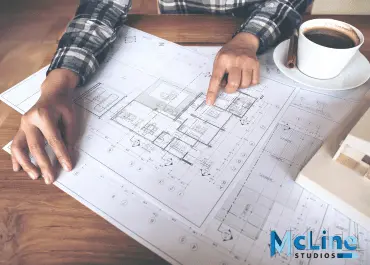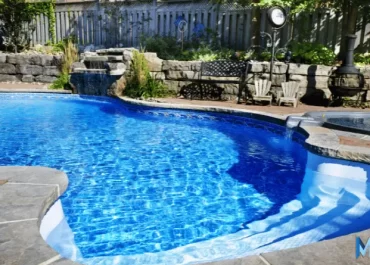Imagine taking a look at the preview of your future space before its construction, yes, it’s possible. All thanks to 3D Exterior Rendering! Exterior rendering isn’t just about the visuals, it reflects the connection between architectural designs and surroundings, including lighting, material, and other environmental factors.
According to recent reports by The Brain Insights, the 3D rendering market is on a surge, expected to reach a valuation of USD 34.57 billion by 2032 from USD 3.11 billion in 2022. This growth is expected due to the increasing demand for realistic visualizations in various sectors, including architecture, construction, and real estate.
In this detailed guide, we’ll discuss everything about exterior rendering, its applications, the future of exterior rendering, and challenges in exterior rendering. So, let’s start!
What Is 3D Exterior Rendering? How Does It Work?
Exterior 3D rendering is the process of creating 3D realistic images or animations of the building’s exterior using computer graphics. It is popular among architects, real estate developers, urban planners, and construction professionals. Exterior 3D design facilitates them to visualize and present design concepts to clients, stakeholders, or the general public.
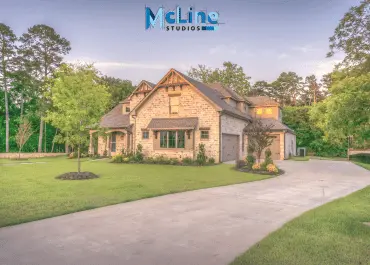
The process of designing architectural exterior rendering involves five important steps.
Modeling – Process Of Creating Digital 3D Model
The first step starts with the creation of a 3D digital model of the exterior of the building or structure using specialized software like AutoCAD, SketchUp, or Revit. This involves defining the shape, size, and proportions of the building, as well as adding architectural details such as doors, windows, and other features.
Texturing – Process Of Providing Texture To The Model
Once the basic model is created, textures are applied to the surfaces to give them a realistic appearance. Textures can include materials like bricks, wood, glass, metal, and concrete, as well as details like paint colors, patterns, and finishes.
Lighting – Process Of Manipulating Light To Create Realistic Images
Lighting plays a vital role in exterior architectural rendering as it affects the mood, atmosphere, and realism of the scene. Virtual light sources are placed and adjusted to simulate natural sunlight, artificial lighting, shadows, and reflections. This helps in making the digital 3D model more realistic.
Rendering – Process Of Generating The Final Image
Rendering involves the generation of the final 2D image or animation from the 3D model and applying lighting, textures, and other visual effects. This is usually done using rendering software such as 3Ds Max, Sketch-Up, V-Ray, Lumion, or Blender. It can be a time-consuming process, especially for complex scenes or high-quality output.
Post-Processing – Process Of Enhancing The Final Product
After rendering, the final images or animations may undergo post-processing to enhance their visual appeal. This can include adjustments to color balance, contrast, brightness, and sharpness, as well as adding effects like depth of field, lens flares, and atmospheric effects.
Applications Of Exterior Rendering
3D exterior rendering has numerous applications across various industries:
- Architectural Visualization: Architects and designers use exterior house rendering to showcase their designs to clients, investors, or the public before construction begins. This helps stakeholders visualize the final appearance of the building, including materials, lighting, and landscaping.
- Real Estate Marketing: Real estate developers and agents use exterior rendering to market properties that are still in the planning or construction phases. High-quality outdoor renderings can attract buyers and investors by providing a glimpse of the finished product.
- Urban Planning: City planners and developers use exterior rendering to visualize proposed developments and urban projects. This helps stakeholders understand how new buildings or infrastructure will fit into the existing environment and how they might impact the surrounding area.
- Advertising and Branding: Companies use exterior rendering in advertising campaigns to showcase their products or services in visually appealing settings. For example, automobile manufacturers might use renderings to showcase new car models in realistic outdoor environments.
- Film and Animation: Exterior rendering is widely used in the film and animation industry to create realistic backgrounds and environments for movies, television shows, and video games. CGI artists use rendering software to generate lifelike landscapes, buildings, and special effects.
Does 3D Exterior Rendering Have a Future?
Absolutely, Yes! As I mentioned before, the 3D rendering market is on a boom and 3d exterior rendering would benefit from this. Advanced technologies like augmented reality (AR) and virtual reality (VR) will revolutionize how architectural designs are visualized.
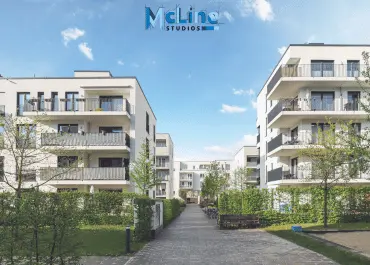
AR-enabled devices will allow users to overlay digital renderings onto physical environments in real-time, providing a seamless virtual and real blend. VR environments will offer immersive experiences, allowing clients to explore exteriors as if they were physically present within them.
So, the future of exterior rendering will be characterized by enhanced realism, interactivity, and sustainability, empowering architects to communicate their visions more effectively and enabling clients to experience architectural designs in unprecedented ways.
Challenges With 3D Exterior Rendering
3D exterior rendering often comes with its own set of challenges. Some of the common challenges with its solution are discussed below:
- Realism: It takes a lot of work to achieve high realism in exterior rendering. It requires attention to detail, including accurate lighting, textures, and materials. It can be challenging to mimic natural lighting conditions and environmental effects convincingly.
Solution: To tackle this, it is recommended to invest in high-quality texture libraries and use physically-based rendering (PBR) techniques to ensure accurate material representation. - Complexity of Scenes: Exterior scenes often involve complex geometry, such as intricate building designs, landscapes, vegetation, and weather effects. Managing the complexity of these scenes while maintaining performance and visual quality can be quite difficult.
Solution: Visualizers should focus on scene optimization techniques such as LOD (Level of Detail) systems and instancing to manage scene complexity efficiently. They should utilize proxy objects for distant elements and employ occlusion culling to reduce rendering overhead. - Optimization: Rendering large exterior scenes with high detail levels can be computationally intensive and time-consuming. Optimization techniques are needed to balance rendering quality with rendering speed, especially for projects with tight deadlines.
Solution: Render farms or distributed rendering can be used to distribute the computational workload across multiple machines. Implementation of progressive rendering techniques can help visualize scenes quickly and refine details iteratively. - Weather and Lighting: Weather conditions and lighting play crucial roles in exterior rendering. Simulating realistic sunlight, shadows, reflections, and atmospheric effects such as fog or rain. It requires advanced rendering techniques and careful parameter tuning.
Solution: Physically-based lighting models and HDR image-based lighting can be used to accurately simulate sunlight, shadows, and atmospheric effects.
The Final Note
To sum it up, exterior rendering provides a powerful visualization tool for architects, designers, and construction professionals. Exterior 3D renderings allow stakeholders to experience a building’s proposed aesthetics and integration with the surrounding environment before construction begins.
This facilitates better decision-making, clearer communication of the design vision, and opportunities to refine plans based on rendered previews. Looking ahead, 3D exterior rendering will become even more seamlessly integrated into the design process through real-time visualization engines and virtual/augmented reality workflows.

